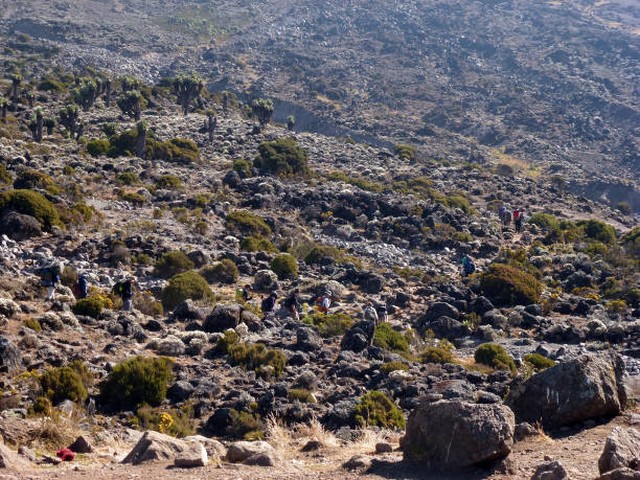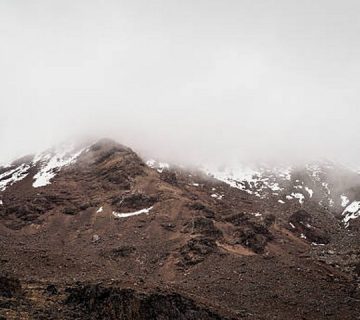Gear Recommendations For Kilimanjaro Rainy Season: A Comprehensive Guide
Kilimanjaro – the name itself sparks a blend of awe and mystery, an invitation to experience one of the world’s most revered natural wonders. At the Kilimanjaro Centre for Trekking and Ecotourism (KCTE), we know that conquering this majestic mountain during the rainy season presents unique challenges and unforgettable rewards. Whether you are a seasoned hiker or a determined novice, the right gear is your first step towards a successful summit.
Climbing Mount Kilimanjaro during the rainy season – typically from March to May and November to December – requires preparation and understanding of the terrain you will encounter. The paths can be slick, the fog dense, and the rainfall sporadic yet heavy. However, with the mountain less crowded, the flora in full bloom, and the peaks often ensconced in mystic clouds, the rainy season can also offer a uniquely tranquil and lush climbing experience.
In this blog post, we will explore essential gear recommendations to ensure your climb is safe, comfortable, and enjoyable. Let’s gear up for an adventure of a lifetime!
Understanding the Kilimanjaro Rainy Season Climbing Dynamics
Why the Right Gear Matters
On Mount Kilimanjaro, your gear is not just equipment – it’s your lifeline. The rainy season throws a mix of challenges, from slippery trails to cold temperatures and, of course, plenty of rain. The right gear provides comfort, boosts your morale, and, most importantly, keeps you safe under changing weather conditions.
Layering Up: The Key to Comfort
Effective layering is crucial when climbing Kilimanjaro during the rainy season. It allows you to adjust to varying temperatures and conditions as you ascend from tropical to arctic climates. Here’s how you should think about layering:
- Base Layer: Moisture-wicking materials like merino wool or synthetic fabrics keep you dry and warm.
- Insulation Layer: Fleece or down jackets that can be easily added or removed based on your activity level and weather changes.
- Outer Layer: Waterproof and breathable jackets and pants are non-negotiable to combat the rain and wind.
Essential Gear List for Kilimanjaro’s Rainy Season
Footwear: Boots and Gaiters
- Waterproof Hiking Boots: Choose boots that are supportive, waterproof, and broken-in to prevent blisters.
- Gaiters: Essential for keeping mud and water out of your boots. They also add an extra layer of protection against the underbrush.
Clothing: Waterproof, Breathable, and Warm
- Waterproof Jacket and Pants: Look for Gore-Tex or similar materials that offer the best waterproofing and breathability.
- Thermal Underwear: Keeps you warm during the chilly nights and higher altitudes.
- Hat, Gloves, and Scarf: Protects against cold winds and rain. Ensure they are waterproof or quick-drying.
Backpacks: Keeping Your Supplies Dry
- Waterproof Backpack: A rain cover might not suffice during heavy downpours, so consider a backpack with built-in waterproof capabilities.
- Pack Liners: As an extra precaution, use pack liners to safeguard your electronics and other essentials.
Sleeping Gear: Warm and Dry Nights
- Four-Season Tent: Provides protection against harsh weather conditions.
- Sleeping Bag: A good quality, four-season sleeping bag rated for at least -10 degrees Celsius.
- Insulated Sleeping Pad: Adds an extra layer of warmth between you and the ground.
Tips for Using Your Gear Effectively
- Test Your Gear: Before your climb, test every piece of gear in similar conditions to what you’ll face on Kilimanjaro.
- Pack Smart: Balance the weight in your pack evenly and make sure that items you need quick access to are readily available.
- Stay Dry: Keep electronics and important documents in waterproof containers or ziplock bags.
Why Choose KCTE for Your Kilimanjaro Adventure?
At KCTE, we specialize in providing meticulously planned treks that cater to the needs of every adventurer. Our expert guides are trained to navigate the complexities of Mount Kilimanjaro, ensuring your journey is not just successful but also deeply enriching. We understand the mountain, respect its ecosystems, and are committed to sustainable tourism practices that preserve its beauty and integrity.
FAQs: Preparing for Your Climb
Q1: What is the best month to climb Kilimanjaro during the rainy season?
- While the rainy season presents challenges, mid-March to early May and November are often less crowded and equally picturesque.
Q2: How heavy should my pack be?
- It is recommended that your day pack does not exceed 15% of your body weight, with porters carrying the bulk of your gear.
Q3: Are there any specific health considerations for the rainy season?
- Yes, ensure you have waterproof protection for any medications and consider increasing your vitamin C intake to help ward off colds.
Embarking on a journey to climb Kilimanjaro during the rainy season is an adventure unlike any other. With the right gear, a spirit of adventure, and the expert guidance from KCTE, you are well on your way to conquering the heights of Kilimanjaro amidst the lush landscapes brought to life by the rains. Ready to take the leap? Contact Kilimanjaro Centre for Trekking and Ecotourism today, and let’s plan your summit together!




